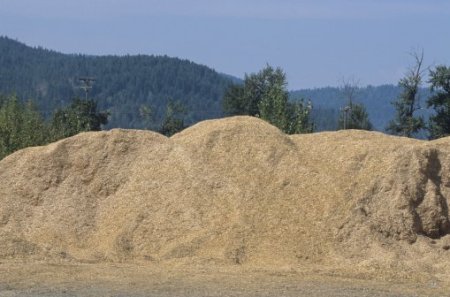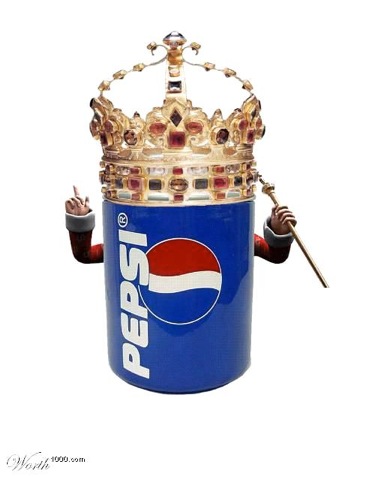Newly reformulated 10-calorie sodas leave fructose levels a mystery
Posted by Linda Bonvie — May 16, 2013
Are you an ‘ex-Pepper’? If so, The Dr. Pepper/Snapple Group hopes to bring you back into the fold. In an effort to lure what it refers to as “consumers who have left the soft drink category” the company is working feverishly to blanket the country with a new lineup of products, consisting of some of its biggest brand names reformulated with a witches’ brew of synthetic sweeteners – a combination of high fructose corn syrup, aspartame and acesulfame potassium (what the company calls its “proprietary blend”). The selling point is that each supposedly contains no more than 10 calories per 12-ounce serving, which accounts for the special designation under which they’re being marketed –“TEN.”
Since HFCS is the second ingredient in the three “TENs” I looked at, Canada Dry Ginger Ale, 7Up and Dr. Pepper, I couldn’t help wondering what the fructose amount is in the HFCS being used. After all, Archer Daniels Midland, one of the biggest manufacturers of this test-tube sweetener, has run ads for a product called “Cornsweet 90” a HFCS blend containing 90 percent fructose that it has called “the ideal choice for reduced calorie foods such as beverages…” And the Corn Refiners Association (CRA) itself has acknowledged in a letter to the Food and Drug Administration that this mega-fructose additive has been in use “with FDA knowledge for decades” (more on that in a minute). So I called the Dr. Pepper Snapple company press office with my question.
In the short conversation I had with company spokesperson Chris Barnes, I leaned more ‘ad speak’ than I could have in a Mad Men marathon. Terms like the “broader TEN platform,” “mouth feel,” “broader flavor system,” and my favorite, the “lapsed soft drink consumer” were dropped repeatedly in our talk. But when I got to my fructose question, Chris didn’t have an answer for me other than “I don’t know that we do share specific ingredient information beyond what’s on the label.” He did ask why I was interested and promised to follow up with the research and development department, but felt fairly sure the company wouldn’t divulge that information.
Although I didn’t get any further insight about fructose amounts from Barnes, he did tell me how “very excited” the company is so far with how “TEN” is “performing,” allowing folks who had concerns over taste and calories to now have the “benefit” of a soft drink once again.
A shocking acknowledgment
Now admittedly, the question of fructose amounts in HFCS is a touchy subject, something the CRA likes to gloss over by repeatedly asserting that the additive isn’t really high in fructose (one reason it had unsuccessfully sought to change its name to “corn sugar”) and telling consumers over and over that HFCS is “virtually the same” as real sugar, which is a 50/50 combination of glucose and fructose.
But contrary to the big public relations blitz put out by the CRA claiming that “sugar is sugar,” a growing body of evidence has come to light showing that HFCS is apparently being used by food and beverage manufacturers in highly fluctuating fructose amounts, including the mega-90 version. Such findings led Citizens for Health to file a petition with the Food and Drug Administration last September, which asked the agency to take action against manufacturers using HFCS with fructose levels above 55 percent, the highest amount the FDA allows, and in the interim, to require the actual amount of fructose it contains to be specified on product labels. (To sign and support that petition, click here).
The CRA response to the FDA about that petition was a shocking acknowledgment that, in violation of FDA regulations, HFCS-90 has been used in the food supply “with FDA knowledge for decades.” The letter, signed by CRA interim president J. Patrick Mohan, also refers to “fluctuations in fructose levels above 42 or 55%” in HFCS, that he apparently believes “would be expressly permitted” by the agency.
But despite Mohan’s apparent belief that all is fine and dandy regardless of what the actual fructose amount in an HFCS blend might be, the FDA has made it perfectly clear that HFCS 90 “contains a substantially different ratio of glucose to fructose than…HFCS-55,” and that the agency doesn’t have enough information to “ensure that this product is safe.”
Numerous medical experts and extensive studies have linked excess fructose consumption to a wide variety of health problems, such as obesity, diabetes, liver and heart disease. And for the CRA, which spent many millions of dollars to tell consumers that HFCS really isn’t high in fructose at all, this statement is quite telling.
But for now, the matter of just how much fructose might be in those new Dr. Pepper/Snapple Group formulas remains a mystery. Which is something you might want to keep in mind before you reach for a “TEN” on your supermarket shelf in the belief that you can now have the “benefit” of drinking soda without having to worry about the consequences.
http://foodidentitytheft.com/newly-reformulated-10-calorie-sodas-leave-fructose-levels-a-mystery/
























